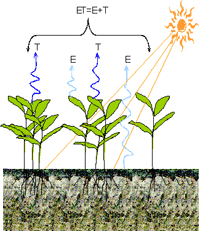Agricultural Research Division of IANR

West Central Research and Extension Center, North Platte
Date of this Version
2015
Citation
J. Anim. Sci. 2015.93:4977–4983 doi:10.2527/jas2015-9259
Abstract
This study investigated effects of stocking rate on cattle performance, quality and quantity of corn residue, and impact of residue removal on grain yield for 5 yr at the University of Nebraska – Lincoln West Central Water Resources Field Laboratory near Brule, NE. Four removal treatments—1) no removal (control), 2) grazing at 2.5 animal unit month (AUM)/ ha, 3) grazing at 5.0 AUM/ha, and 4) baling—were applied to a center pivot–irrigated corn field (53 ha). The field was divided into eight 6.6-ha paddocks to which replicated treatments were assigned. Samples of residue were collected in October and March (before and after residue removal) using ten 0.5-m2 quadrats per treatment replication. Residue was separated into 5 plant parts—stem, cob, leaf, husk, and grain—and analyzed for nutrient content. Esophageally fistulated cattle were used to measure diet quality. Cattle assigned to the 2.5 AUM/ha stocking rate treatment gained more BW (P < 0.01) and BCS (P < 0.01) than cattle assigned to the 5.0 AUM/ha treatment. Leaf contained the most (P < 0.01) CP and husk had the greatest (P < 0.01) in vitro OM disappearance (IVOMD) but the CP and IVOMD of individual plant parts did not differ (P > 0.69) between sampling dates. Amount of total residue was reduced (P < 0.05) by baling and both grazing treatments between October and March but was not different (P > 0.05) in control paddocks between sampling dates. As a proportion of the total residue, stem increased (P < 0.01) and husk decreased (P < 0.01) between October and March. Diet CP content was similar (P = 0.10) between sampling dates for the 2 grazing treatments but IVOMD was greater after grazing in the 2.5 AUM/ha grazing treatment (P = 0.04). Subsequent grain yields were not different (P = 0.16) across all 4 residue removal treatments. At the proper stocking rate, corn residue grazing results in acceptable animal performance without negatively impacting subsequent corn grain production.


Comments
© 2015 American Society of Animal Science. All rights reserved